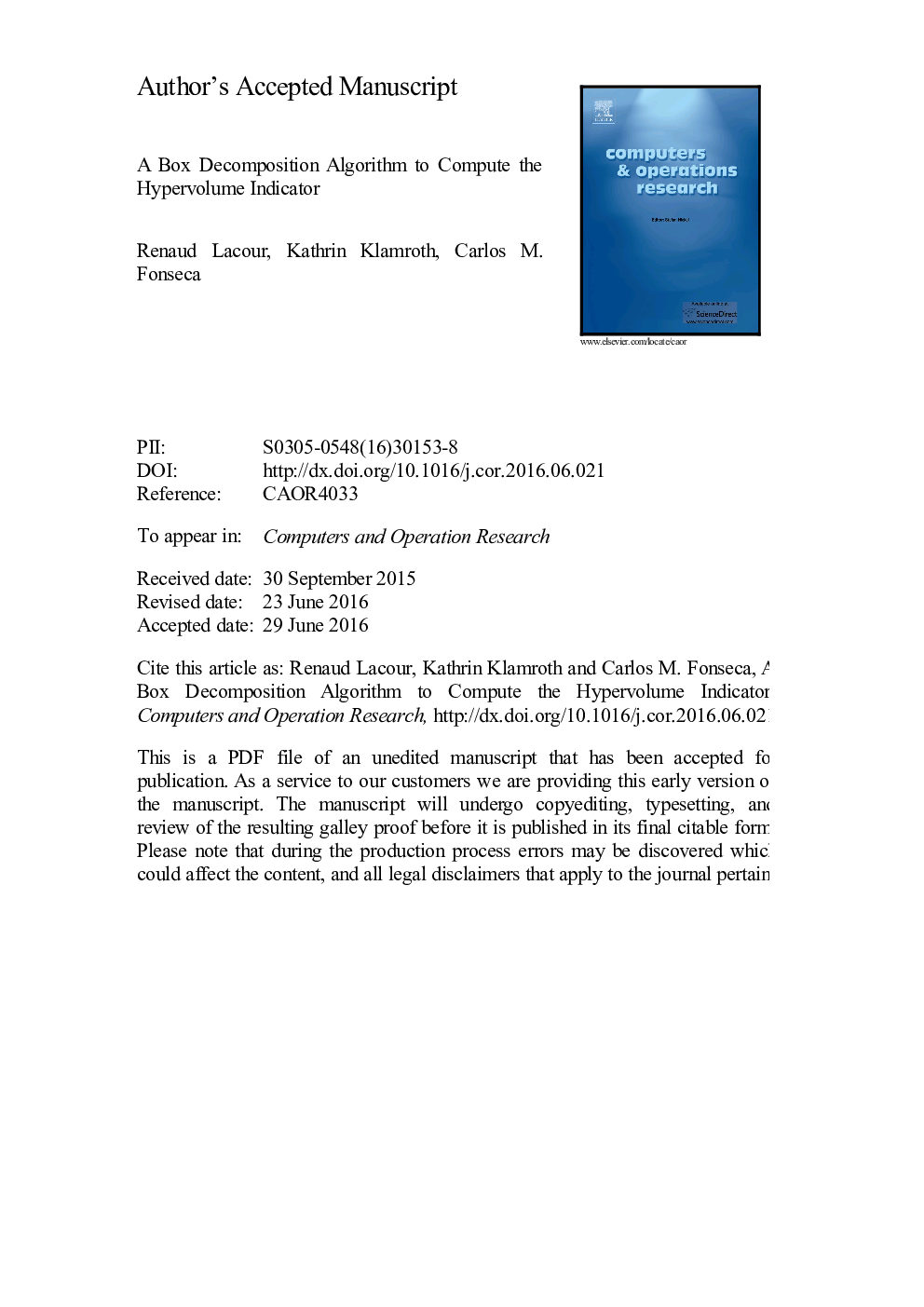| Article ID | Journal | Published Year | Pages | File Type |
|---|---|---|---|---|
| 4959182 | Computers & Operations Research | 2017 | 28 Pages |
Abstract
We propose a new approach to the computation of the hypervolume indicator, based on partitioning the dominated region into a set of axis-parallel hyperrectangles or boxes. We present a nonincremental algorithm and an incremental algorithm, which allows insertions of points, whose time complexities are O(nâpâ12â+1) and O(nâp2â+1), respectively, where n is the number of points and p is the dimension of the objective space. While the theoretical complexity of such a method is lower bounded by the complexity of the partition, which is, in the worst-case, larger than the best upper bound on the complexity of the hypervolume computation, we show that it is practically efficient. In particular, the nonincremental algorithm competes with the currently most practically efficient algorithms. Finally, we prove an enhanced upper bound of O(npâ1) and a lower bound of Ω(nâp2âlogn) for pâ¥4 on the worst-case complexity of the WFG algorithm.
Related Topics
Physical Sciences and Engineering
Computer Science
Computer Science (General)
Authors
Renaud Lacour, Kathrin Klamroth, Carlos M. Fonseca,
